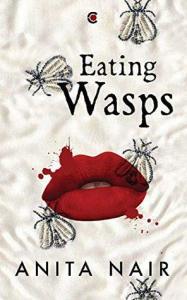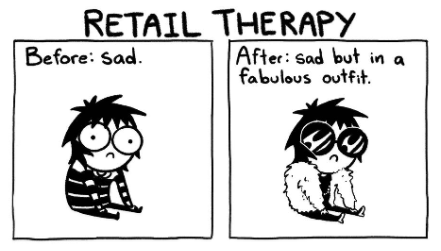“Perhaps the fault lay with me. No man wanted me enough to put me above everything else.”
 At this point, I think I read Anita Nair out of habit and loyalty. I’m no longer the reader I was five years ago, completely besotted with her writing . There was a time when I believed in terms of plot and feminist story-lines, few books could surpass what Nair had done in Lessons in Forgetting – a book I still recommend to friends, and in Radha of Mistress, I had seen myself as if in a mirror.
At this point, I think I read Anita Nair out of habit and loyalty. I’m no longer the reader I was five years ago, completely besotted with her writing . There was a time when I believed in terms of plot and feminist story-lines, few books could surpass what Nair had done in Lessons in Forgetting – a book I still recommend to friends, and in Radha of Mistress, I had seen myself as if in a mirror.
It’s this knowledge, perhaps, of the potential of Nair’s writing that’s causing me so much disappointment today, having shut and shelved her latest, Eating Wasps. A story that rambles on without having much to say, although so much could have been said. A book with characters that seem more like fillers and drawn from stories we’ve seen or read in films or other books.
Eating Wasps is the story of Sreelakshmi, a writer who commits suicide at the age of thirty five, giving rise to a lot of speculation in the small town she hailed from. Her soul gets trapped in a bone, which was taken from her funeral pyre by her lover, Markose. The bone is later discovered by a small child in the year 2015, releasing Sreelakshmi’s spirit for her to observe the lives of the women around her. Interspersed with this narrative are the stories of Urvashi, a woman in an unhappy marriage, who is now being harrassed by a man she had an affair with; Megha, the child who found the bone who was abused by a man in her school bus; Brinda, a star badminton player who quits the game abruptly; Najma, an acid attack victim; and Liliana, the victim of an MMS scandal. Oh, and Maya, Uncle Koman’s wife from Mistress.
Eating Wasps isn’t a big book – it’s about 250 pages long. We could, perhaps, include all these story-lines into a book this short. Perhaps. But in its current form, it feels like too many cooks. It appears as if Nair wanted to highlight all the problems women have and decided to put all of it in one book. It feels unjust to explore these themes so briefly, so unsatisfactorily. When the book started, I assumed it was about Sreelakshmi and Urvashi, and maybe about Najma. But I was wrong, it was equally about all these characters and it was equally mixed up and equally incomplete. Can’t say Nair is unfair to her characters! I expected Sreelakshmi’s story at the very least to be more detailed, given she’s the narrator and everything, but it feels like the author clutches at a few strings and then decides to let them all go.
Another thing to be noted is, the plot is not entirely fiction. I thought at first that there was a Sylvia Plath-esque undercurrent to the story, but I was wrong. I was discussing the book with Anjana (The Greedy Reader), and she told me there really was an author whose life and death were similar to that of our protagonist Sreelakshmi. What’s more, her name was Rajelakshmi! Coincidence? I think not. As I hinted before, terrible lack of originality and poor attempt to hide it.
Eating Wasps aims to be romantic and haunting, and maybe gritty, but it fails on all counts. I’d give this a rating of 2.5, and I may still read Nair’s books in the future – like I said, loyalty and habit – but that’s not to say that this is a book I’d even halfheartedly recommend to a friend.
PS: Fans of the Mistress would be extra pissed – [||Spoiler||] Radha leaves Shyam at the end of Mistress and is pregnant with Chris’ child. In Eating Wasps, somehow they’re back together, Shyam is no longer a dick, and there is no child. Uncle Koman is dead, so this is definitely set after the events of Mistress. I feel so cheated!
 Jack Armstrong is dying. He’s 35 years old, married to his high school sweetheart, Lizzie, and has contracted a disease that remains unnamed from start to finish but is serious enough to kill him by Christmas. He’s marking his days off on a calendar, worried about his three children (Mikki, Cory and Jackie), writing his “final” letters to Lizzie. . Understandable. My sympathies. Out of the blue, Lizzie slaps Jack’s friend who makes a move on her – this scene serves no purpose (except maybe to show men can’t trust their friends *shrugs*). Anyway. Just before Christmas, Lizzie meets with an accident and dies. Her evil mom decides to send the children to live with their relatives because Jack could die any minute now. Can’t applaud her plan but nevertheless, understandable.
Jack Armstrong is dying. He’s 35 years old, married to his high school sweetheart, Lizzie, and has contracted a disease that remains unnamed from start to finish but is serious enough to kill him by Christmas. He’s marking his days off on a calendar, worried about his three children (Mikki, Cory and Jackie), writing his “final” letters to Lizzie. . Understandable. My sympathies. Out of the blue, Lizzie slaps Jack’s friend who makes a move on her – this scene serves no purpose (except maybe to show men can’t trust their friends *shrugs*). Anyway. Just before Christmas, Lizzie meets with an accident and dies. Her evil mom decides to send the children to live with their relatives because Jack could die any minute now. Can’t applaud her plan but nevertheless, understandable. Is it possible to miss a book once you’ve finished it?
Is it possible to miss a book once you’ve finished it? As a book blogger, you’d think my job would be to tell you about good books, give reccos, tell you how a certain book made me feel (which varies from speechless to nauseous). Imagine my surprise then when over the last few weeks, people texted me to let me know they missed my reviews of terrible books.
As a book blogger, you’d think my job would be to tell you about good books, give reccos, tell you how a certain book made me feel (which varies from speechless to nauseous). Imagine my surprise then when over the last few weeks, people texted me to let me know they missed my reviews of terrible books. While I was browsing NetGalley sometime last year, Eleanor Oliphant is Completely Fine caught my eye – whether it was the title or the cover, I can’t say. I requested for it but sadly did not get a copy (it says “Your request is pending”, but when half a year’s gone by, you know it’s never gonna be approved). So I got a copy from elsewhere – bang in the middle of my reading block (that I’ve written so much about that I think it’s unnecessary to refresh anyone’s memory). It took me a while to finish it – a much longer time than a book of this length and this excellence warrants. But that old part of my mind is hella persistent! The fact that this book is what it is surely helped my determination.
While I was browsing NetGalley sometime last year, Eleanor Oliphant is Completely Fine caught my eye – whether it was the title or the cover, I can’t say. I requested for it but sadly did not get a copy (it says “Your request is pending”, but when half a year’s gone by, you know it’s never gonna be approved). So I got a copy from elsewhere – bang in the middle of my reading block (that I’ve written so much about that I think it’s unnecessary to refresh anyone’s memory). It took me a while to finish it – a much longer time than a book of this length and this excellence warrants. But that old part of my mind is hella persistent! The fact that this book is what it is surely helped my determination. The Witch Doesn’t Burn in This One. I find that title to be a powerful one – one that makes you stand up, take notice, stop what you’re doing and listen. One that shouts we’re done taking shit lying down. One that announces, we’re women, and we’re tired of being burnt at stake because our only crime is that of being women.
The Witch Doesn’t Burn in This One. I find that title to be a powerful one – one that makes you stand up, take notice, stop what you’re doing and listen. One that shouts we’re done taking shit lying down. One that announces, we’re women, and we’re tired of being burnt at stake because our only crime is that of being women. Herding Cats is the third book in the Sarah’s Scribbles series.
Herding Cats is the third book in the Sarah’s Scribbles series. 


You must be logged in to post a comment.